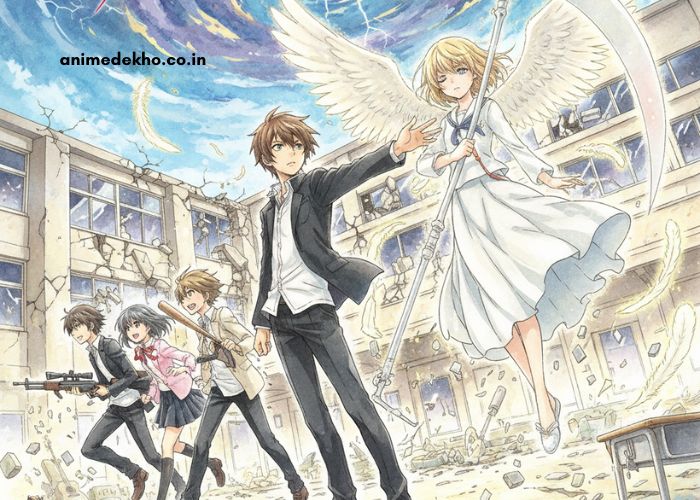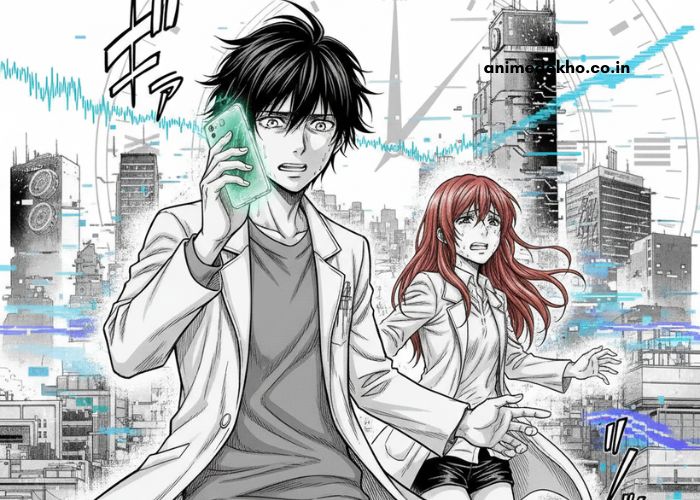| Point | Details |
|---|---|
| Title | Rascal Does Not Dream of a Knapsack Kid |
| Genre | Drama, Supernatural |
| Main Character | Sakuta Azusagawa |
| Theme | Growth & Emotional Healing |
| Symbolism | Lost Innocence |
| Release Year | 2025 (Estimated) |
Rascal Does Not Dream of a Knapsack Kid is a deeply emotional and thought-provoking episode from the popular Rascal Does Not Dream series. Known for its unique blend of supernatural mystery and heartfelt drama, this manhua continues to explore the complexities of adolescence, relationships, and personal growth. Each chapter of this series introduces a new “Puberty Syndrome” a supernatural phenomenon reflecting inner emotional conflicts. In this episode, the story shifts toward a new challenge that tests both heart and mind.
Overview
This episode follows the main character Sakuta Azusagawa, a compassionate yet straightforward teenager, as he faces another emotional puzzle connected to the people he cares about. Rascal Does Not Dream of a Knapsack Kid dives into themes of maturity, self-identity, and familial love, presenting a touching story that captures the essence of growing up.
The narrative centers on the mysterious appearance of a younger version of Mai Sakurajima’s stepdaughter, symbolizing the emotional struggles tied to growing up and facing responsibilities. The “Knapsack Kid” serves as a powerful metaphor for lost innocence and the fears that accompany change. Through heartfelt conversations and supernatural twists, Sakuta learns how to understand, accept, and embrace emotional growth both his own and others’.
Emotional Core
Like previous installments in the Rascal Does Not Dream series, this episode blends fantasy with raw emotion. It tackles sensitive topics such as identity, family dynamics, and the emotional burden of expectations. The “Knapsack Kid” represents not only the literal child but also the inner child within every adult struggling to adapt to life’s changes.
The episode encourages readers to reflect on how growing up doesn’t mean abandoning one’s past but rather integrating it with newfound maturity. The delicate balance between acceptance and change forms the emotional heart of this story.
Art and Visuals
The artwork in Rascal Does Not Dream of a Knapsack Kid remains faithful to the series’ signature aesthetic clean lines, expressive faces, and subtle emotional depth. The visual storytelling amplifies the episode’s atmosphere, with soft shading and detailed expressions that communicate unspoken feelings. Every scene, whether dramatic or quiet, resonates with emotional sincerity.
The juxtaposition of calm school life with supernatural occurrences keeps readers visually engaged while reinforcing the manhua’s central theme that even ordinary moments can carry extraordinary meaning.
Characters and Development
Sakuta once again shines as a compassionate and insightful protagonist, acting as the emotional anchor of the story. His ability to connect with others through empathy makes him a standout character.
Mai Sakurajima, though not the central focus, remains a key emotional pillar, offering wisdom and support. The “Knapsack Kid” character embodies innocence and the bittersweet nature of growing up, adding both mystery and warmth to the narrative.
Each interaction between characters deepens the emotional stakes, showcasing the series’ strength in crafting relationships grounded in honesty and vulnerability.
Why Fans Love This Episode
Fans cherish Rascal Does Not Dream of a Knapsack Kid for its emotional storytelling, layered symbolism, and relatable life lessons. It’s not just another supernatural mystery it’s a heartfelt exploration of what it means to grow, love, and forgive oneself.
Conclusion
Rascal Does Not Dream of a Knapsack Kid stands as one of the most touching entries in the series, offering a perfect mix of emotional resonance and supernatural intrigue. With its heartfelt message about embracing growth while cherishing one’s past, this manhua episode leaves readers reflecting long after they turn the final page.





